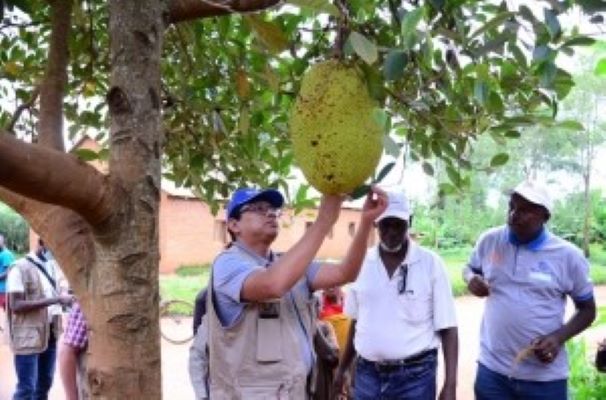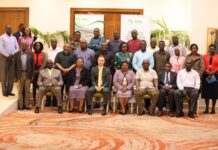The Food and Agriculture Organization of the United Nations (FAO) Subregional Office for Eastern Africa and the Ministry of the Environment, Agriculture and Livestock have successfully released biological control agents of the Mango Mealybug in Burundi.
The biological control agent release was done in two provinces of Burundi, in the months of April and May in two rounds, aiming to effectively control the mealybug and reduce crop damage by the invasive plant pest. The biological pest control programme (the use of living organisms to suppress pest populations) used natural enemies of the mango mealybug: (Gyranusoidea tebygi and Anagyrus mangicola). Measuring less than 1 mm long, the tiny wasps feed exclusively on mango mealybugs and pose no human, animal or environmental risk.
The mealybug has been observed in several localities of Burundi, with significant infestations in Kirundo and Muyinga provinces. The infestation is visible on several plants such as mango, citrus, banana, guava, several ornamentals, horticultural, and shade plants. The second release took place in Muyinga province on 06 and 07 May 2022 and in Kirundo province on 08 May 2022. The parasitoids were brought from Benin by the International Institute of Tropical Agriculture (IITA). The FAO Burundi Country Office and the Burundi National Mango Mealybug Management Task Force members coordinated the field release in both provinces.
The mealybug is also present in Rwanda and Uganda in the Eastern African Subregion. FAO has been working closely with IITA and the governments of Rwanda and Uganda to control this pest since its emergence in 2019. Burundi is leading the regional effort by being the first country in the region to adopt this agroecological approach to restore the balance of nature by introducing the natural enemies of the mango mealybug.
Orlando Sosa, FAO Agriculture Officer, highlighted the importance of using effective pest control methods on the Mango mealybug that poses the risk of spreading to other neighbouring countries in the East African region. “The use of biological control agents has been quite successful in Western Africa, where the pest was reported in 11 countries, causing considerable crop damage. This is why we have made a technology transfer from West Africa to East Africa to employ the most effective pest management technique,” he added.
Sosa added that FAO will continue supporting affected countries through its technical cooperation project that focuses on enhancing the preparedness and response capacity of three Eastern African countries to the mango mealybug. FAO hopes to conduct the same activity of releasing these parasitoids in Rwanda and Uganda to curb the invasion of the pest onto other countries in the region and reduce regional vulnerability to food insecurity. “It is imperative for member states and farmer communities to note that the biological control of the pest will bear rapid results in radically reducing the pest population. Since the pest is exotic to these countries and arrived without its natural enemy, our release of its natural enemies will help restore the natural ecological balance. In this regard, chemical control will not help such control efforts because chemical spraying will hamper the parasitoids from doing their work effectively.”
The Director of Plant Protection at the Ministry of Environment, Agriculture and Livestock of Burundi, Goreth Itangishaka expressed her government’s satisfaction with the efforts of FAO and IITA in releasing the natural enemies of the Mango Mealybug since the identification of this pest which has already caused enormous damage in the country. She pointed out that with the success of the biological control agents, production can rise to the level before the pest invasion.
The mango mealybug, also known by its scientific name – Rastrococcus invadens Williams (Hemiptera: Pseudococcidae), is one of the pests that threaten African smallholder farmers whose livelihoods are heavily dependent on the production of mangoes. The sap-sucking insect feeds on the leaves, flowers, fruits and young parts of the Mango stem. In heavy infestations, blackish layers called sooty mould cover the leaves. The heavily attacked parts of a plant stop growing, resulting in lower productivity or death. In terms of yield: the pest causes enormous damage, causing up to 90% fruit loss, and citrus fruits can be significantly affected with fruit yield losses of up to 53%.









